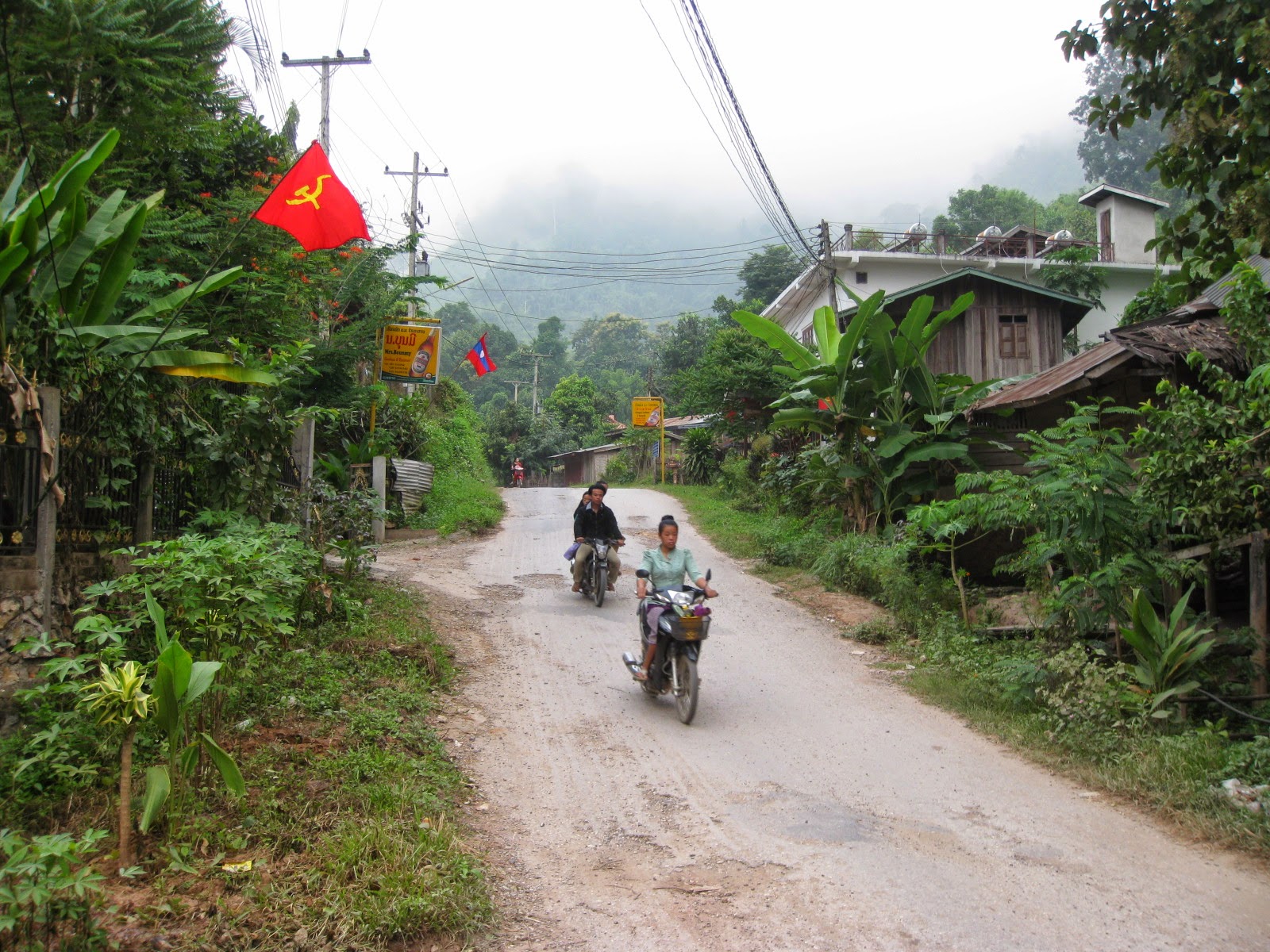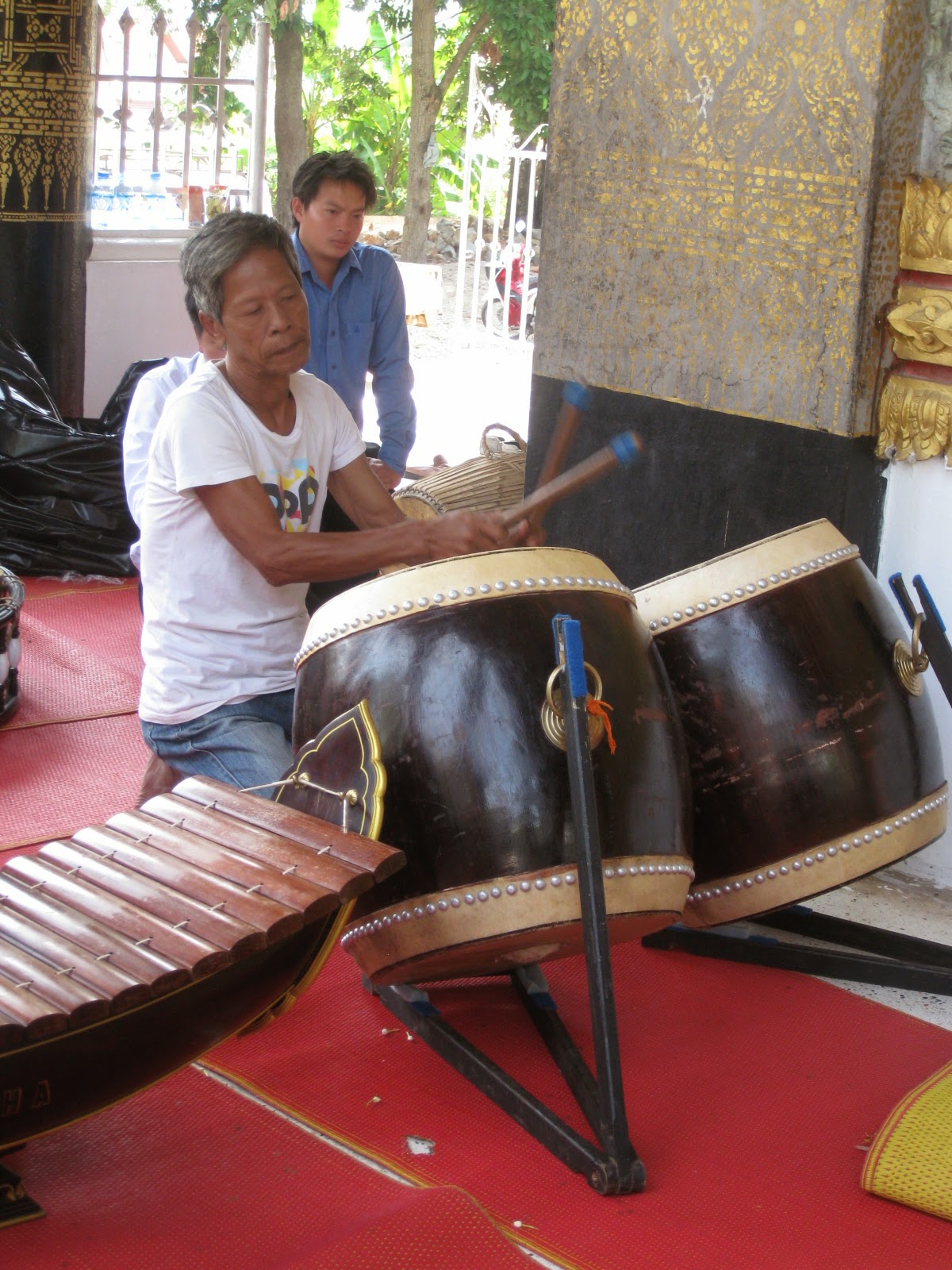To my disappointment, almost every animal along the way was domesticated: a few gaggles of pot-bellied pigs; lots of water buffalo; a group or two of elephants with handlers; a few white birds of some type...Otherwise it was like a chapter out of Silent Spring.
 |
| Lots of buffalo, but where's the wildlife? |
As it turned out, the most wildlife on this excursion was on the boat itself. Most passengers were more interested in the alcohol service in the rear than anything else.
After four or five hours underway, the "partying" was reaching critical mass, and it was truly an international cast -- alcoholic Australians, inebriated Eurotrash, carousing Koreans, chortling Chinamen -- all roaring it up like pirates after a good plunder.
As the journey went on, some were hanging over the side, heaving or barfing; some dropped 640 ml BeerLaos onto the deck to dull thunks of shattered glass and suds...
And this bunch was not about to be shut-off: With the party animals stomping their feet and banging the hull with their empties, at least four times the boat pulled over to shore. The Lao lady who minded the bar troddled a path up from the riverbank, disappeared within a wall of green vegetation, and returned a few minutes later with a yellow case of BeerLao on her shoulder. Party on, as they say.
(Just what was up there those times, beyond the vegetation, I don't know.)
 |
| Overnight here. The only way in or out is by water. |
 |
| Local woman, near Pak Beng. |
 |
| Street in Pak Beng. Note Communist flag at top-left. |
The boozers didn't have to skip a beat when we disembarked at Pak Beng, the river town where we overnighted -- a smiley little man was handing out cups of the local brew to all visitors who passed by. Evidently the custom there. Later at the restaurants, a complimentary shot was served along with all food orders. Again, the custom there.
What did it taste like? Well I can tell you this: After my order arrived, I slid my shot across the table to a guy from South Korea. The jaunty type, he held it up in a toast, then downed it...Shortly after, his body was spasming in revulsion, followed by coughing and gagging.
By the way, Pak Beng was the first place I ever saw water buffalo on the menu. This is common throughout Lao, I discovered, but my first time. (It was tough and stringy and made my jaw sore I had to chew it so much.)
 |
| What a tabletop! At one time, big timber sprouted in these parts. |
Now a few words about traveling the river itself: First off, this was not the poke-along ride that I thought it was going to be. The Mekong through these parts is a-movin'. A relentless, swirling flow. You jump in on one side and try to swim across, you better be a strong or it'll sweep you way on down, if you make it at all.
Second, the river runs wide for miles, then narrows into numerous canyons, often strewn with rock formations. More often than not, these canyons acted like wind tunnels, perhaps even generated their own wind because before our boat entered conditions were calm.
 |
| Some of what we had to negotiate. |
The wind, the current, the rocks -- for these reasons Mekong River boats here are long and flexible. They're made to be maneuverable, to swerve around hazards, which can be unnerving if you're not used to it.
For example, you enter into a canyon strewn with rocks...The current picks up, you zag past whirlpools big enough to swallow a dog. The captain is working up a sweat -- whirling the wheel left, then hard right...The boat bends and creaks and groans beneath you, flexing into each change of direction. Sometimes you swear that the thing is going to break apart under your feet!
Then a gust of wind impacts, trying to rotate the boat crosswise...The captain clenches teeth and rips the wheel hard some more...
This is not entirely hypothetical -- similar instances happened on the two days going downriver. It was scary until I figured out that the boats were so-designed and could take it with ease.
Population-wise, the numbers in this part of the world go something like this: Neighboring Thailand has a population of about 55 million people, while mainly rural Lao chimes in with only about 5 million. All this by way of saying, we didn't encounter many crowds en route. In fact, aside from a few villages, we saw very few people.
As dusk fell on the second day out, however, that was about to change. In the distance, glowing up into the gathering darkness, the bright lights of civilization. Just around the bend, the city of Luang Prabang at last. Said to be the nicest city in Lao.
As it so happened, more by dumb luck than anything, the timing of our arrival was superb.
[PART THREE TO FOLLOW NEXT WEEKEND]


















